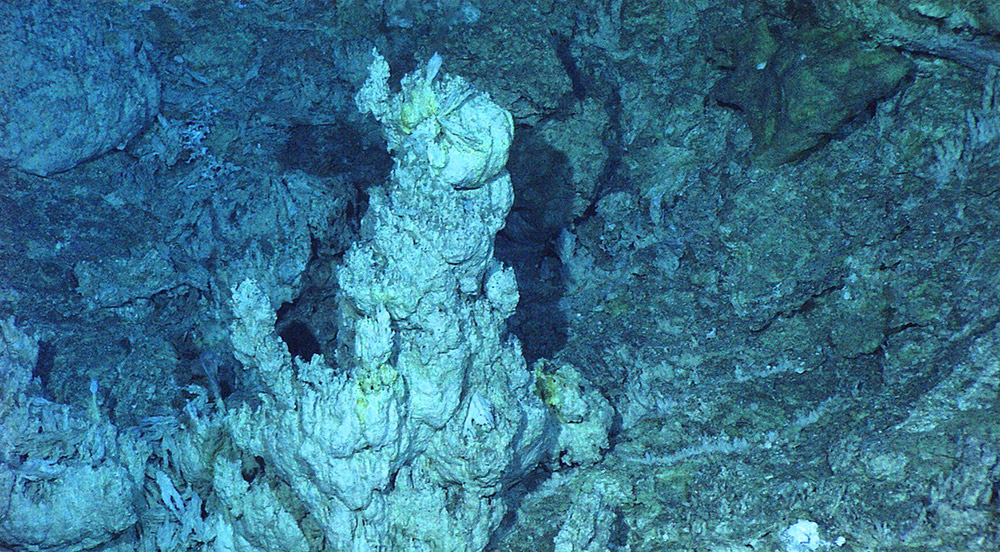Back to the primordial soup: the scientists reconstructed the metabolic reactions that were already in the first cells and where they got their energy from. It turns out that under certain conditions, a significant portion of the 402 basic reactions occur without additional energy input. In order to get the first cells to metabolize, only heat, hydrogen, ammonia and carbon dioxide were necessary – and they can still be found today in the hot, alkaline chimneys of the sea floor.
where and how first life I grew up on the ground still open. It only seems clear that at some point the first building blocks of life such as amino acids and DNA bases as well as RNA and DNA formed. They came later too first enzymes added. Of these components, the first arose in small vesicles or pores, and then 3.8 billion years ago in the first true cells Metabolism One of the first living things.
402 primitive reactions
But what reactions does the metabolism of these primitive cells consist of? Where did he get his energy from? Jessica Wimmer of the Heinrich Heine University in Düsseldorf and her colleagues have now found a possible answer. With the help of genetic and biochemical comparisons of different bacteria and archaea, they succeeded in reconstructing the metabolism of the primitive cell.
The team identified a network of 402 interactions that occurred in all microbial cells examined, despite differences in origin and lifestyle. These metabolic pathways are used to produce and process amino acids, proteins, genetic material, and other essential molecules. As raw materials for this, the primitive reaction network requires simple starting materials such as hydrogen, carbon dioxide and ammonia, the researchers report.
According to Wimmer and her team, this indicates that progenitor cells and early cells have already used these metabolic pathways. So it was possible to preserve the basic interaction pathways from the beginning of life.
primitive soup in the computer
However, this raises the question of the source of these early metabolic reactions: “Four billion years ago, the enzymes that catalyze the reactions in today’s cells did not exist,” Wimmer explains. “Instead, the reactions should be able to happen spontaneously in the environment at that time.” Therefore, the researchers examined the energy balance of the 402 network interactions with the help of computer models.
However, the occurrence of the reaction spontaneously and without the absorption of additional external energy depends on the environmental conditions. So the team conducted reactions through different pH values, temperatures and concentrations of the starting materials. “There has been many speculations about the source of the driving energy. But no one has examined the metabolism itself,” says Wimmer.

Chemical energy instead of light
Analyzes revealed: Under the appropriate conditions, most of the initial metabolic steps take place without additional energy input. In some cases, the reactions release energy, which then leads to the following reactions. Thus, basic metabolism would have served as an internal source of energy in the earliest beginnings of life – the molecules themselves provided the chemical energy.
“We showed that the energy at the origin of life is purely chemical in nature. We don’t need sunlight, meteors or ultraviolet rays,” says Wimmer. Instead, only carbon dioxide, water, ammonia and some salts were needed, plus Temperatures around 80 degrees and an alkaline environment around pH 9. As today with many organisms in the deep biosphere, hydrogen served as the main chemical energy resource.
Water chimneys are the cradle of life?
This ingredient list in Primal Metabolism also provides valuable information about where first life might be. “This environment is perfectly compatible with the environment in the hydrothermal field”lost city“, an undersea mountain range in the middle of the Atlantic,” explains senior author William Martin of the University of Dusseldorf. There are hot alkaline chimneys that have long been considered a model of the cradle of life.
Wimmer and her colleagues’ findings now confirm this. Because they also suggest that these hot springs on the ocean floor may have played an important role in the origin of life. (Frontiers in Microbiology, 2021; doi: 10.3389/fmicb.2021.793664)
Source: Heinrich Heine University Düsseldorf

“Professional food nerd. Internet scholar. Typical bacon buff. Passionate creator.”





